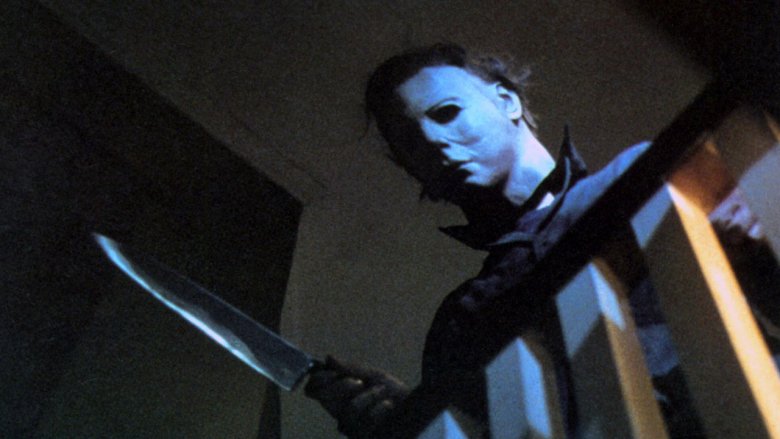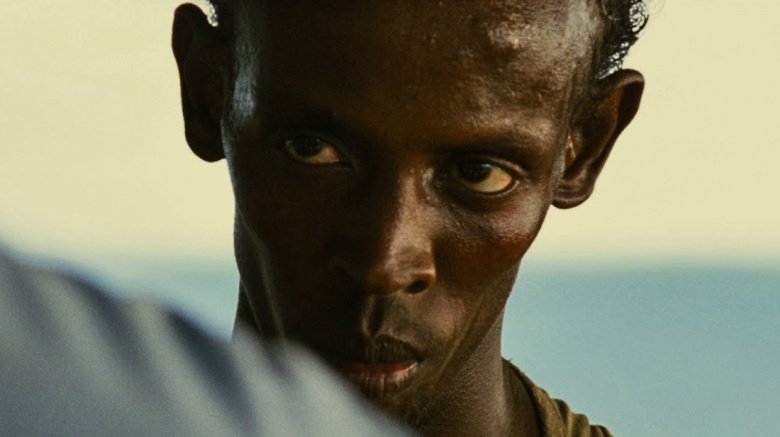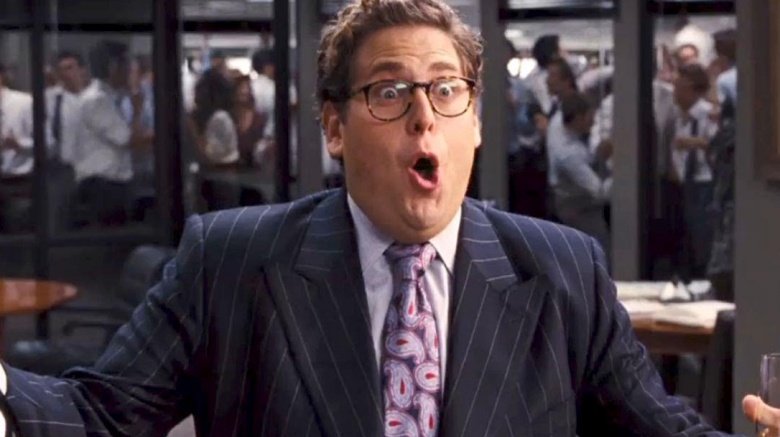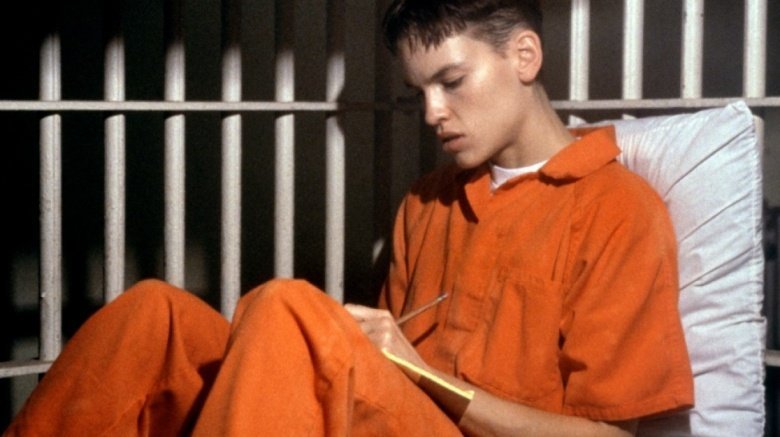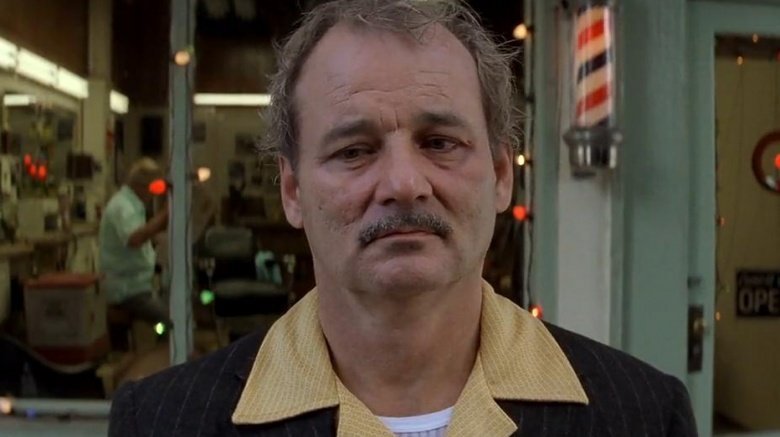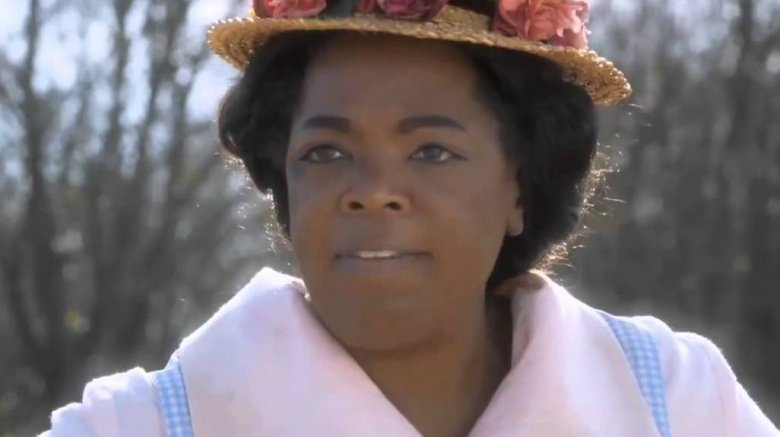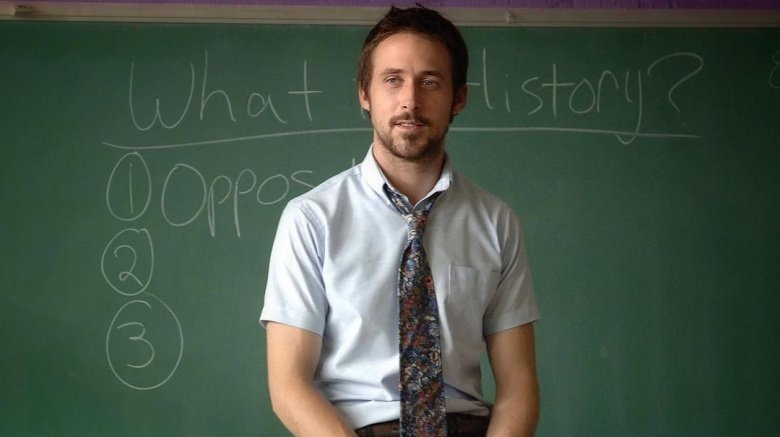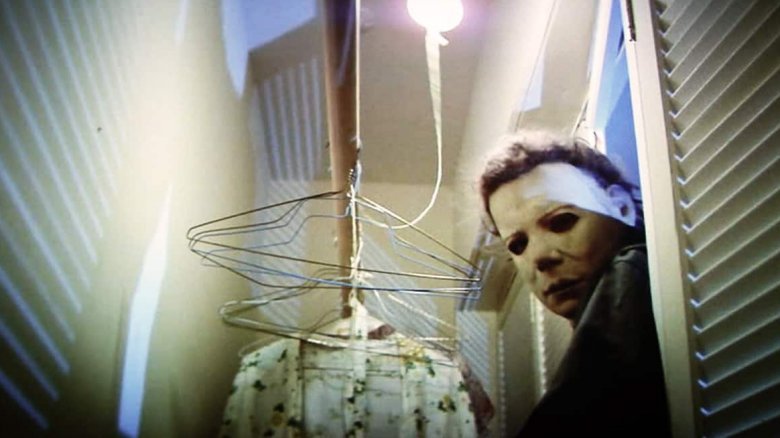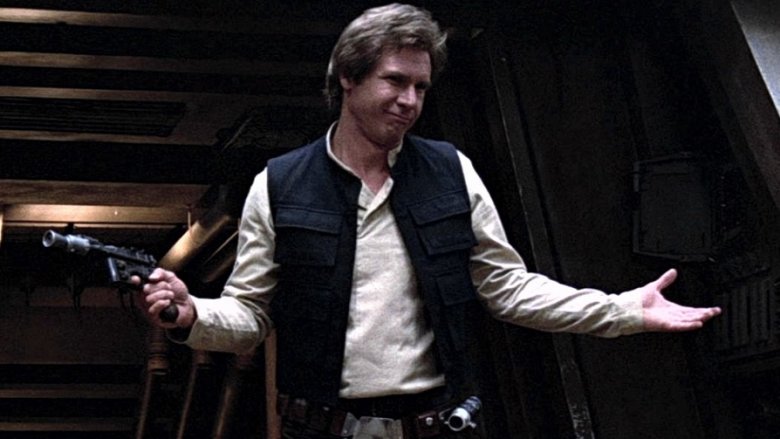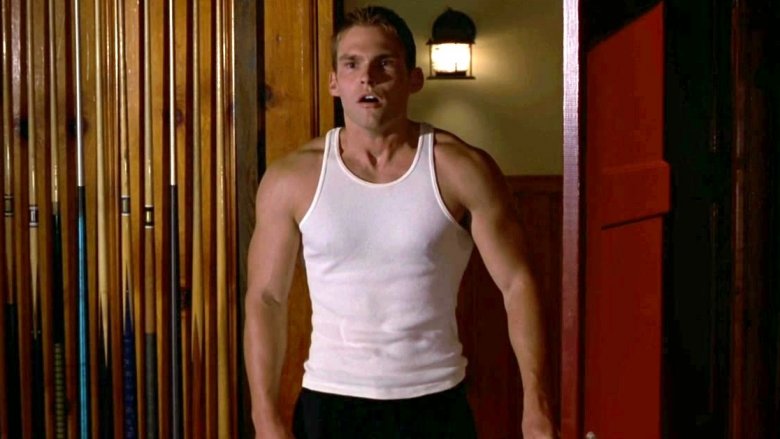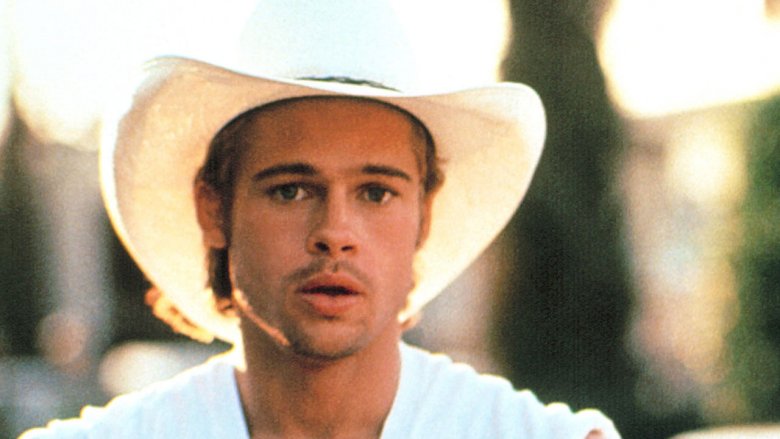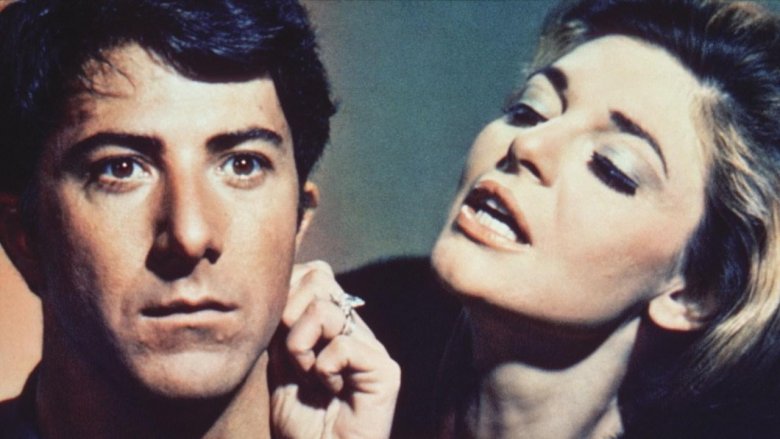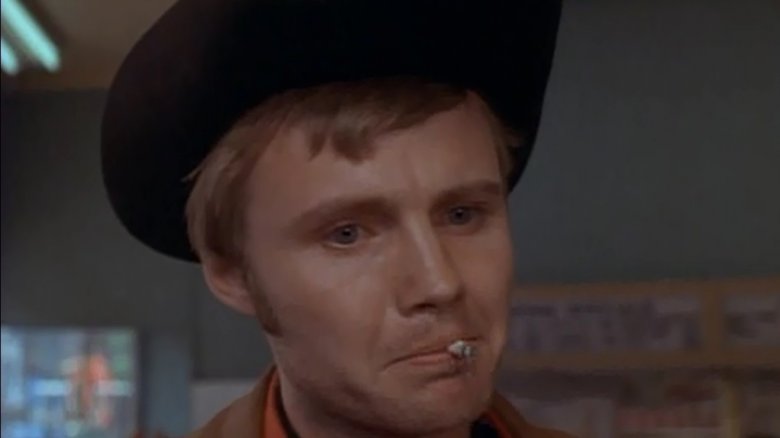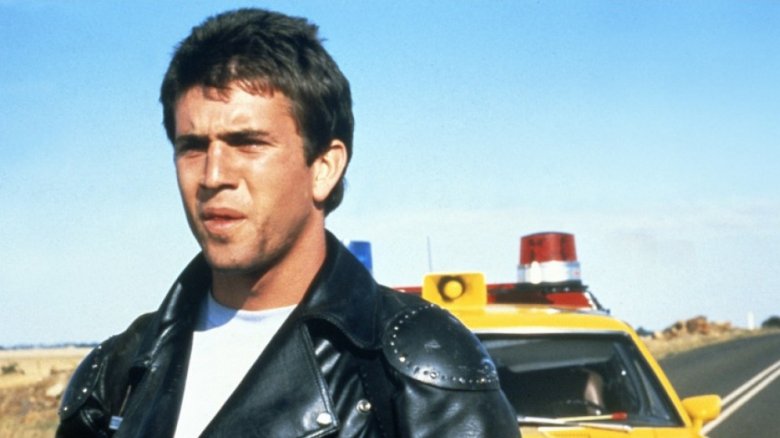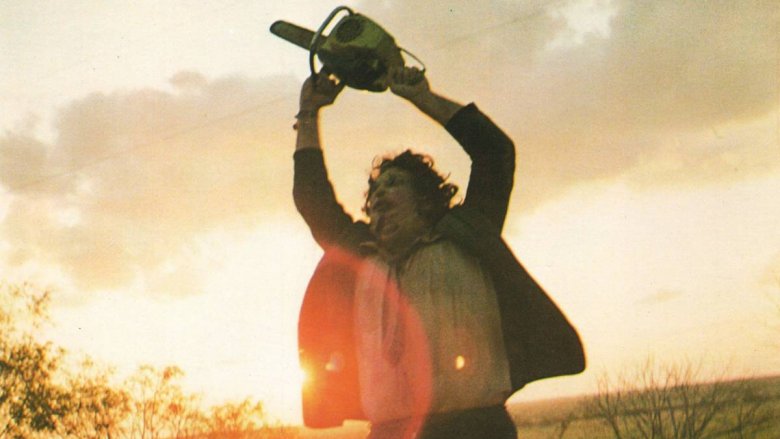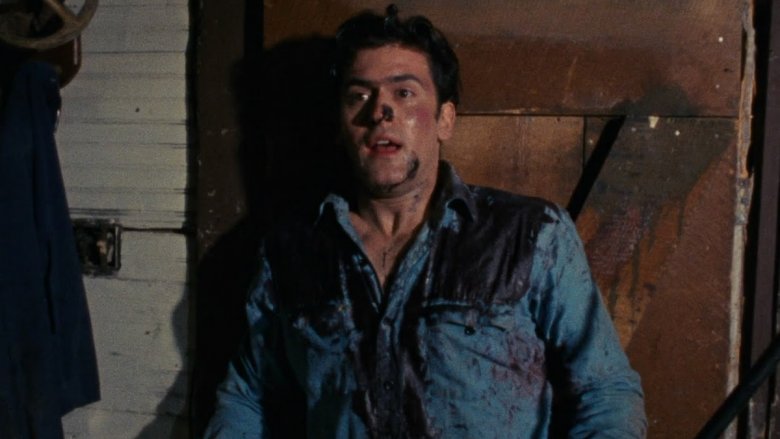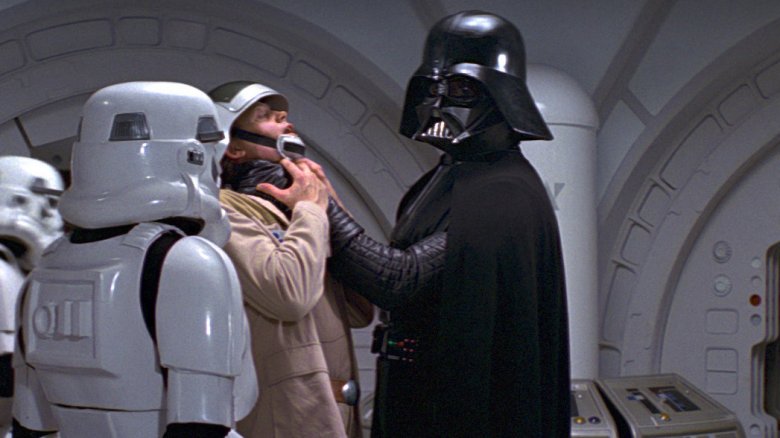Famous Roles That Paid Actors Almost Nothing
Many of us admire Hollywood stars because they're everything we'd ideally like to be: good-looking, famous, well-liked, and rich. But for most of us, if we had to pick just one of those qualities, the choice would be pretty clear: We'd all like to be rolling in dough. Careers that pay wheelbarrows full of cash are pretty rare, and those that pay truckloads for pretending to be, say, Iron Man are rarer still. To be sure, even though the job can involve early mornings and late nights, hours in makeup, and screaming directors, being an actor seems like a pretty sweet gig. Even minor roles can pay more than the average person makes in a year, and getting lucky enough to land a part that becomes world-famous — iconic, even — means you're set for life... right?
Not necessarily. Sure, the actors who filled the following roles might not exactly be in the poorhouse, and many of them used said roles as springboards to future success. Others were already successful, and took smaller paydays for their own reasons. But these are roles which seem like they should have paid a heck of a lot more than they did — which is, relatively speaking, next to nothing.
Barkhad Abdi — Captain Phillips
Not long ago, Barkhad Abdi was a recent immigrant from Somalia, eking out a living as a limousine driver for his brother's company in Minneapolis. But fate intervened: director Paul Greengrass happened to be seeking Somali men for his fact-based drama Captain Phillips, and as Minneapolis has a high population of Somali immigrants, he put out an open casting call in the area. On a lark, Abdi and three friends tried out — and shortly thereafter, all four found themselves sitting across from Greengrass at a restaurant on the beach in L.A., receiving the unbelievable news that they'd been cast. Abdi won the role of Abduwali Muse, the ringleader of the 2009 hijacking of the cargo ship Maersk Alabama, and starred opposite Tom freaking Hanks as the ship's captain, Richard Phillips.
The $55 million picture would go on to a $218 million worldwide gross and a slew of Oscar nominations, including one for Abdi — but the role earned him only $65,000, five grand above the Screen Actors' Guild minimum. He even briefly went back to work selling mobile phones in Minneapolis, although he quit on the day of the film's premiere. He's worked pretty steadily since — including an appearance in Blade Runner 2049 — but he's yet to receive the huge payday that typically follows Oscar-nominated debuts.
Jonah Hill — The Wolf of Wall Street
Martin Scorsese's 2013 biopic The Wolf of Wall Street is fast-paced, peppered with lively dialogue, and at turns both harrowing and hilarious. Leonardo DiCaprio was a shoo-in for the role of corrupt stockbroker Jordan Belfort — but the part of Belfort's chief partner-in-crime Donnie Azoff (changed for the film after his inspiration, Danny Porush, threatened a lawsuit) could have gone to any number of Hollywood funnymen. When Jonah Hill got his hands on the script, the opportunity to work with one of cinema's all-time great directors prompted him to lobby his friend DiCaprio for the part.
Scorsese liked Hill, but the casting remained up in the air until producers decided to float him a lowball offer. Speaking with The Hollywood Reporter, he said, "They gave me the lowest amount of money possible... I said 'I will sign the papers tonight, fax me the papers tonight. I want to sign them tonight before they change their mind.'" That amount: $60,000, the minimum mandated by the Screen Actors' Guild. The film grossed nearly $400 million and earned Hill his second Oscar nomination, so he has no regrets. "I would sell my house and give [Scorsese] all my money to work for him," said Hill. "I would have done anything in the world. I would do it again in a second."
Hilary Swank — Boys Don't Cry
The SAG's pay scale varies according to the production's budget, which means indie pictures can get away with paying their stars a relative pittance. Hilary Swank had been working for years before she was cast in the lead in 1999's Boys Don't Cry, the true story of the brutal murder of transgender youth Brandon Teena, but the film's $2 million budget meant nobody was scoring a huge payday. Although it failed to burn up the box office, the movie (and Swank's performance) resonated with critics — so much so that Swank was the surprise recipient of a Best Actress Oscar for the role in 2000.
The film's critical success led to a slew of offers for Swank, including 2004's Million Dollar Baby, for which she took home another Best Actress statue. But it didn't immediately land her on Easy Street. Speaking with People in 2016, she said, "I made $3,000. In order to have health insurance, you have to make $5,000. So I didn't even know that I didn't have health insurance until I went and tried to get a prescription filled. They said, 'That's $160.' I went, 'Um, did you try my insurance?' They said, 'Mmm-hmm.' I had an Academy Award, [and] no health insurance."
Bill Murray — Rushmore
Bill Murray famously doesn't really seek out roles anymore; filmmakers seek him out. He hasn't had an agent since 2000; instead, he has a toll-free number where anyone in the know can leave a message to pitch him their latest project. The short list of actors who could conduct business in this manner and still receive offers reads "Bill Murray" — but on the flip side, if he believes in a project, there isn't much he won't do to accommodate it.
Case in point: Wes Anderson's 1998 feature Rushmore, which landed Murray a slew of award nominations. Murray worked for scale, only pulling down about $9,000 for his role (plus a small percentage of the profits), but that's not all: when Disney balked at the cost of renting a helicopter for an overhead tracking shot, Murray wrote Anderson a personal check for $25,000 to cover it. At the end of the day, the director decided against using the shot, and he kept the uncashed check as a memento. Anderson would go on to cast Murray in seven more of his films, one of the more fruitful director/star relationships in recent history.
Oprah Winfrey — The Color Purple
1985's The Color Purple started to shift the public's perception of Steven Spielberg. He was previously known as a dependable summer blockbuster machine with a strong visual flair, but the period drama showcased his knack for tackling mature subjects with an accessible storytelling style, foreshadowing his future award-winning success with such slices of history as Schindler's List and Saving Private Ryan. An adaptation of Alice Walker's Pulitzer-winning novel, The Color Purple was a resounding success; its stellar cast included Whoopi Goldberg, Danny Glover, Rae Dawn Chong, and — in her big screen debut — Oprah Winfrey, who was teetering on the edge of nationwide fame and wouldn't launch her syndicated talk show for another year.
Winfrey's work in the film raised her profile, but it didn't exactly fatten her wallet. Producer Quincy Jones wrote in his autobiography that she earned only $35,000, but it's safe to say Purple bolstered the careers of nearly everyone involved. Glover went on to superstardom with the Lethal Weapon series, Spielberg remained one of the most lauded directors of his time, and today, Winfrey is a media mogul worth nearly $3 billion.
Ryan Gosling — Half Nelson
He's known today as an actor of prodigious talent and uncommon commitment, but Ryan Gosling started out as a child star in such high-minded projects as The Mickey Mouse Club and Young Hercules, and upon announcing his intentions to pursue a "serious" film career at the age of 19, he was promptly kicked to the curb by his agents. But Gosling was tenacious, and followed up a breakout role in 2001's The Believer with one opposite future real-life love interest Rachel McAdams in 2004's wildly popular The Notebook.
After that film became a smash hit, grossing $115 million worldwide, Gosling suddenly found himself in demand — but rather than go for a big payday, he signed on to the 2006 character study Half Nelson, the debut feature from filmmakers Ryan Fleck and Anna Boden. Although the film failed to generate much in the way of box office, Gosling's portrayal of a crack-addicted teacher earned him critical raves and an Oscar nomination for Best Actor. He earned only $1,000 per week for his work, a far cry from the seven-figure salary he commands on larger productions such as Blade Runner 2049 and First Man. As for Boden and Fleck, they, too, have gotten into the tentpole act: the pair were tapped to co-direct the 2019 MCU feature Captain Marvel.
Nick Castle — Halloween
John Carpenter's 1978 classic Halloween left a gigantic imprint on popular culture, but at the time, nobody involved knew they were giving birth to a franchise as unstoppable as Michael Myers himself. Originally titled The Babysitter Murders, the film was meant to launch the (now defunct) Compass International Pictures, and produced on a shoestring budget of $320,000. It went on to become the highest-grossing independent feature ever made at the time, and launched the careers of Carpenter and lead Jamie Lee Curtis — but the entire cast and crew worked for peanuts.
Donald Pleasance, who portrayed psychiatrist and prophet of doom Sam Loomis, was the production's highest-paid actor due to his name recognition. He was paid $20,000, while Carpenter took $10,000 and a percentage of the profits. For her breakout starring role, Curtis was only paid $8,000 — but even that looked like big money next to the payday of stuntman Nick Castle, Carpenter's buddy and the man behind Myers' mask. Castle was paid the princely sum of $25 a day for his role in a film that would go on to gross $55 million, but he wasn't too busted up about it, since it opened up opportunities for him to direct his own films. As for Curtis, she summed up her position nicely: "Halloween gave everyone involved with it a career. I'd say that's good enough."
Harrison Ford — Star Wars Episode IV: A New Hope
To say that the success of 1977's Star Wars Episode IV: A New Hope was unexpected would be an understatement. Sci-fi wasn't exactly box office gold then; said Fox executive Gareth Wigan, "I believe it was said at the time that no science fiction picture [had] grossed more than $10 million, and no picture with War in the title ever grossed more than six or seven million." George Lucas had gotten the green light due to the success of his '50s period piece American Graffiti, but nary an executive had the slightest understanding of what he was going for. The production was famously almost canceled, and its visual effects recycled for other projects.
The film's budget was a paltry $11 million, of which $750,000 was allocated for the producers, directors, and cast. Said cast would become household names, but they certainly weren't before — least of all Harrison Ford, who was working as a carpenter when he was cast. For the role of lovable space rogue Han Solo, Ford was paid $1,000 per week, a total of about $10,000. Of course, future appearances as Solo netted him just a little more; for his swan song as the character in 2015's Star Wars Episode VII: The Force Awakens, he made north of $30 million.
Seann William Scott — American Pie
1999's American Pie was a smash hit and ushered in a new wave of raunchy sexy comedies, catapulting its stars into the limelight in the process. Jason Biggs, Alyson Hannigan, and Seann William Scott all owe their careers to the film, which began life as a screenplay titled Untitled Teenage S** Comedy That Can Be Made For Under $10 Million That Most Readers Will Probably Hate But I Think You Will Love. A few fortunate name changes later, the film went into production (funnily enough, with an $11 million budget), and upon release it ever-so-slightly exceeded expectations by grossing $235 million worldwide and launching a franchise that stubbornly refuses to die.
Even if you've never seen a single American Pie movie, you're probably tangentially aware of Scott's character Stifler, the amiable lunkhead with an amorous mother who provides plenty of the films' slapstick beats. The original was Scott's big-screen debut, and the long list of credits he's racked up since (including additional turns as Stifler) are thanks in large part to its unexpected blockbuster success. But it certainly didn't stuff his pockets; he made a mere $8,000, barely enough to cover a few months' rent in Hollywood. Compare and contrast with 2012's American Reunion, for which he and Biggs were each paid a cool $5 million.
Brad Pitt — Thelma and Louise
Hollywood A-listers don't get much more A-list-y than Brad Pitt, but he struggled early on, taking gigs in soap operas and small film productions before landing a small but crucial role in Ridley Scott's 1991 buddy film Thelma and Louise. The film was a significant hit, and Pitt's appearance as shady drifter and thief J.D. exposed his talents to a wider audience. The rest of the '90s would be very good to him; 1992 brought a role in Robert Redford's critically acclaimed drama A River Runs Through It, 1994 saw him starring opposite Anthony Hopkins in the Oscar-winning Legends of the Fall, and lead roles in Se7en and Fight Club later in the decade would rocket him to international stardom.
None of it may have happened if not for Thelma and Louise — but with comparatively big-name actors Geena Davis, Susan Sarandon, Michael Madsen, and Harvey Keitel already on the payroll, the $16.5 million production didn't dole out huge paydays to its bit players. Pitt was paid all of $6,000 for the role that effectively marked the beginning of his ascent to the upper echelon of Hollywood stardom, and he'd credit Sarandon in particular with showing him how to be professional on set — even if Sarandon doesn't remember it that way. "It seemed like it was absolutely, absolutely easy for him," she said in a 2014 interview. "He's a very smart guy."
Dustin Hoffman — The Graduate
A standup comedian and alumnus of the Compass Players (which would go on to become the Second City comedy troupe), Mike Nichols moved on to directing Broadway plays in the early '60s, scoring success with productions of Neil Simon's Barefoot in the Park and The Odd Couple. This led to his first Hollywood directing gig: the 1967 adaptation of the bestselling novel Who's Afraid of Virginia Woolf? The film scored five Academy Awards on 13 nominations, earned Nichols comparisons to Orson Welles, and promptly landed him his next job — another adaptation of a popular novel, Charles Webb's The Graduate.
The story of a young man caught in a love triangle with an older woman and her daughter, the film garnered another fistful of Oscar nominations and won Nichols his first, for Best Director. Its star: a then-unknown Dustin Hoffman. For his breakout role, Hoffman made only $17,000 — and after taxes and expenses were deducted, the young actor was left with only about $4,000. Even after The Graduate's release, Hoffman found himself collecting unemployment checks to make ends meet — but it wouldn't be long before he notched a bigger payday, for his supporting role in 1968's Midnight Cowboy.
Jon Voight — Midnight Cowboy
Hoffman's role as small-time con artist Ratso Rizzo in Midnight Cowboy helped to cement his reputation as a gifted and versatile actor (even though The Graduate director Mike Nichols warned him against accepting the part, for fear it might ruin his image). The first and only X-rated film to win an Academy Award for Best Picture (and to be screened in the White House), Cowboy starred Jon Voight in the role of Joe Buck, a young rural dishwasher who moves to the Big Apple. Their roles netted Voight and Hoffman matching Best Actor Oscars, and became an all-time American classic — but Voight had to make one small concession before being cast in the $3.6 million production.
The film was only his second feature role, and in a 2013 interview, Voight said, "I knew what it meant. It was going to give me a career, and I was right." He directed his agent to inform the producers that he would accept the role "for nothing" — he was actually a bit surprised when he was offered the part as long as he would work for scale. In fact, studio United Artists was so determined to pinch pennies on the film that on the last day of shooting, Voight was presented with a bill for $14.73 to cover the cost of his meals.
Mel Gibson — Mad Max
Prior to 1979, struggling young actor Mel Gibson had landed bit parts on a couple of television shows, a TV movie, and one lowly featured entitled Summer City. In a 2005 interview, he called his debut film "an abomination... a cheap, nasty movie that was cranked out in three weeks on a tiny budget." He was paid a measly $20, and his disillusionment with the film industry was such that — in his telling, at least — he didn't even intend to audition for the role that would catapult him to stardom. He drove a friend to the open casting call for George Miller's Mad Max, and once Miller got a look at his mug (which was black and blue from a bar fight the night before), the director resolved to cast Gibson as one of the random "freaks" populating the film.
Miller, knowing Hollywood good looks when he saw them, changed his mind once Gibson's face healed. The actor was handed the lead role, taking $15,000 for a film that would launch a lucrative franchise and make him a household name. Gibson would reprise the role twice before handing it off to Tom Hardy for 2016's Mad Max: Fury Road; after meeting Hardy, Gibson gave his characteristically blunt blessing, telling his agent, "I think [they] found someone who's crazier than I am."
Gunnar Hansen — The Texas Chain Saw Massacre
The Texas Chain Saw Massacre is many things: a seminal slasher, a fine example of squeezing the most out of a minuscule budget, and a movie that — like many others — was financed largely by mob money. Well, that's not exactly correct; it was financed in part by profits from the infamous adult film Deep Throat, which were in need of laundering due to that film's mafia-related origins. These profits were used to found Bryanston Distribution Company, which provided a large portion of the funds after original production company MAB Inc. ran out of cash.
What happened next was an insane tangle of mismanagement and lawsuits, complicated by the fact that Bryanston was driven into bankruptcy after its head Louis "Butchie" Peraino was brought up on obscenity charges over Deep Throat. Hooper managed to talk the cast into deferring their salaries until the film was sold — but by the time it was, there was so much money owed to so many parties that there was very little left over for cast and crew. For his role as chainsaw-wielding madman Leatherface, actor Gunnar Hansen received about $800 — $200 per week over the four-week shoot, during which he worked 12 to 16-hour days. He would later say that we would have made "more money working at McDonald's" during that time — but on the bright side, it's tough to become a horror icon slinging burgers.
Bruce Campbell — Evil Dead
The genesis of the 1981 horror classic The Evil Dead was a 30-minute short, shot on 8MM film for $1,600 by director Sam Raimi as a proof of concept for a feature. Titled Within the Woods, it succeeded in gaining attention from potential investors, not all of it positive. Raimi and his buddy Bruce Campbell, who starred, screened it dozens of times before finally scraping together enough to commence filming — $85,000, well short of Raimi's goal of $150,000. The budding filmmaker then enlisted friends as cast, crew and production assistants, and hauled them out into the middle of the Tennessee woods for a monthlong shoot which took an enormous physical and mental toll (Raimi would later call it "the most difficult thing I've ever done in my life").
The film, however, became an instant classic, helped along by a glowing review from none other than Stephen King. It netted Raimi and company a tidy profit after all those investors were paid back, but during the shoot, cast and crew were barely paid enough to cover food and beer. In his autobiography, Campbell related that he (along with all the other actors) made "a staggering $100 per week."
James Earl Jones — Star Wars Episode IV: A New Hope
If there was one thing that propelled Star Wars to record-breaking success, it may have been the menacing, icy presence of its villain. Darth Vader has become one of the most instantly recognizable pop culture figures in the world, and it may not have happened had actor David Prowse's original line readings been kept in the film. His high-pitched, heavily accented delivery was so out-of-step with the character's appearance that even his co-stars took to calling the villain "Darth Farmer," and to George Lucas' credit, he knew this would give audiences trouble taking the character seriously.
Enter James Earl Jones, whose booming voice was perfect for — and has become synonymous with — the Dark Lord of the Sith. Lucas made perhaps the smartest decision of his career by bringing in Jones to overdub Prowse's dialogue, but while his performance helped make Vader an icon, it didn't exactly blow up Jones' bank account. In a 2014 conversation with the American Film Institute, Jones said, "I got paid $7,000 and I thought that was good money." For a few days' work in the mic booth, perhaps so — but for giving life to the greatest villain in all of cinema, not so much.
